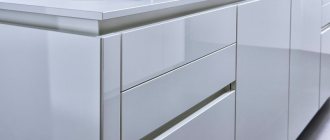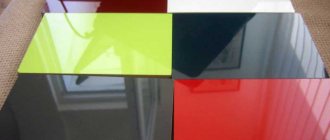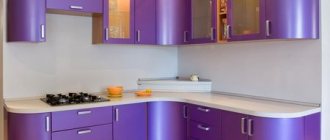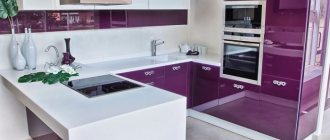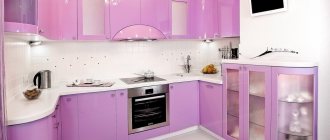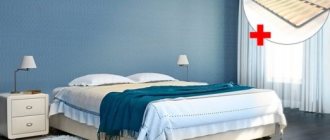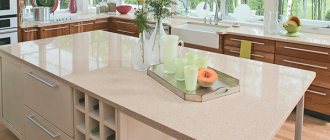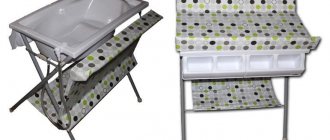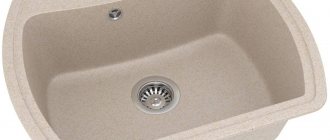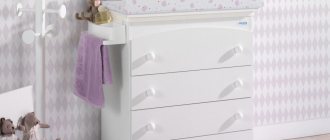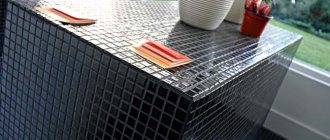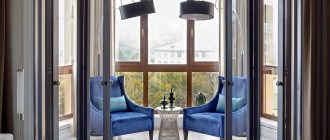Selecting furniture, facades and household appliances for the kitchen is a troublesome and lengthy process. A special issue here is how to choose the right façade material for the kitchen. This is understandable, since it is the facades that play an important role: they set the tone and style, which affects the perception of the room as a whole. However, their functions are not limited to this. The cost of facades is often commensurate with the amounts spent on repair work, and the conditions of their operation are quite harsh. It will not be possible to limit yourself to only answering the question “what color of the kitchen façade to choose.” It is necessary to study well the resistance to wear, high temperatures, humidity and regular chemical exposure, as well as stay within the planned budget.
It is very difficult to decide which facades are best to choose for the kitchen: user reviews are contradictory, because everyone wants to buy what is right for them. Many do not find their option. Then the question becomes acute: “what is better to choose for a kitchen set - MDF, plastic, solid wood”, “what type of kitchen facade to choose”. In this article we will try to cover this topic as fully as possible.
CALCULATE THE COST
CALCULATE THE COST
MDF and enamel
MDF is often used as the basis for kitchen furniture. The popularity of the material is explained by its good performance characteristics combined with an affordable cost. An enamel-coated facade has a number of advantages:
- the ability to choose from a wide palette of colors;
- facades come in various geometric shapes;
- resistance to high temperatures;
- ease of care;
- a wide variety of textures, the possibility of applying a relief pattern.
Among the disadvantages is the relatively high cost of facades. Over time, the painted surface will lose color if it is frequently exposed to ultraviolet rays. During restoration it is quite difficult to choose the original color. MDF is characterized by low resistance to mechanical damage, so scratches or cracks may appear on the facades. It is not recommended to clean surfaces with abrasives or detergents containing active alkaline substances.
MDF and veneer
Veneer is thin wood shavings. MDF facades with such finishing are distinguished by their noble appearance and add luxury and sophistication to the interior. They are difficult to distinguish from sets made of natural wood, but the cost is much lower. Veneered facades have the following advantages:
- large selection of headset designs;
- aesthetic appearance;
- ease of care;
- low cost;
- variety of facade shapes.
The disadvantages of veneered MDF include low moisture resistance. Because of this, after a few years the facades may swell, which will ruin their appearance. If necessary, surface restoration can be carried out. When exposed to ultraviolet rays, the material may change color over time.
Opening systems
The convenience of the facade, as well as its ergonomics, is directly related to the mechanisms for opening it.
In practice, the following varieties are used.
- Swing. The most common option. Considered a classic. The panel is attached to the side of the cabinet using furniture hinges. The opening occurs forward towards itself. The only drawback of such a system is the need for sufficient space in front of the furniture. The cost of such a system is insignificant.
- Folding. A bit similar to the previous type, but the door opens forward and down. To do this, the hinges are placed along the bottom of the cabinet. Be sure to supplement with limiters.
- Sliding. This type of facade opens by moving the canvas along guides. The optimal solution for small kitchens where it is not possible to provide the space in front of the furniture necessary for other mechanisms. The disadvantages include a reduction in the usable volume of the cabinet, and access to the contents is also slightly limited.
- Foldable. The opening occurs along guides, but the canvas consists of several elements that fold like an accordion. Quite a simple and convenient solution. There is no need to provide space in front of the furniture. But such mechanisms are not particularly reliable. The hinges quickly become loose and fail.
- Lifting. The reverse of the tilt mechanism, the door opens forward and upward. This is achieved through gas lift or special springs. This solution is optimal for upper modules.
The appearance of the furniture directly depends on the facade. There are many different solutions made from different materials, differing in finish and decor. This variety allows you to choose the best option.
Glass in MDF or solid frame
Glass facades are an original solution for kitchen units. Triplex or tempered glass is used for their manufacture. If it breaks, it does not crumble, but remains in the frame. Glass can be transparent, frosted, or decorated with images. Currently, there is a wide selection of color solutions for such facades.
A frame made of MDF or solid wood will complement the appearance of the set and add aristocratic notes to the interior. Among the advantages of glass facades are noted:
- durability;
- possibility of use in various interiors;
- moisture resistance;
- resistance to high temperatures;
- environmental Safety.
Glass facades can be illuminated to add originality to the interior. Frames made of MDF and solid wood are durable and resistant to mechanical damage. Scratches are practically invisible on them, and if necessary, grinding can be carried out, which will help restore the original appearance.
Characteristics of basic materials for kitchen facades
In order not to make a mistake with your choice, you need to have a good idea of what materials facades are made of, what their pros and cons are. First you need to understand the production technology of kitchen facades from composite materials - the most commonly found on sale.
The base of the facade is usually made of chipboard (chipboard) or MDF (fibreboard). Then a coating is applied to this base, which performs protective and decorative functions. Sometimes the base is made of plywood or even wood, but such kitchen fronts are much more expensive. The role of decorative coating is usually performed by plastic, but it is also possible to use wood veneer and other materials.
The choice of material for the kitchen is determined by fairly harsh operating conditions: high temperatures, high humidity, the content of soot and fat particles in the air, the possibility of exposure to aggressive liquids - all this imposes certain requirements if you want the set to serve you for a long time.
MDF boards today are the most popular as a material for the base of kitchen facades, since MDF has a dense structure, similar to the structure of wood, which allows the formation of any patterns. The properties of kitchen facades depend, when composite materials are used for their production, on the characteristics of the coating, and when made from wood, on the properties of the wood species.
When thinking about which kitchen facades to choose, you need to pay attention not only to their decorative qualities and price, but also to the characteristics of the materials from which they are made. The more resistant these materials are to aggressive environments, high temperatures and high humidity, the longer the kitchen set will last without changing its appearance.
Glass in a metal frame
For glass facades in a metal frame, you can choose different types of material:
- triplex;
- hardened;
- float glass.
The material is resistant to high temperatures. Glass is easy to clean and tolerates abrasive detergents well. The metal frame organically complements and is the finishing touch to the appearance of the kitchen set. Furniture recommended for premises, made in modern styles: loft, hi-tech, minimalism, etc. Kitchen sets with glass fronts in a metal frame are suitable for those who prefer minimalism.
Among the shortcomings of the products are:
- heavy weight of the structure;
- lack of possibility of restoration in case of chips.
Glass facades require regular maintenance, as fingerprints and other dirt are clearly visible on them. However, matte surfaces are more practical. Glass can be laminated with film and decorated with various images.
Color solutions for facades and compatibility with the kitchen interior
When choosing the color scheme and presentation format of the kitchen façade, we must not forget about its appropriate appearance in the kitchen interior. Using our simple style guide, you can quickly find the perfect furniture:
- Provence: in this direction, solid doors in a light shade (white, light gray, light blue) or similar framed doors with bars, frosted glass would be appropriate; a kitchen with patina would also go well with the style;
- hi-tech and modern: the best option would be black, gray and silver or bright facades with glossy surfaces and aluminum edges;
- classic and loft: a good option would be framed and solid doors in light brown and dark brown;
- modern and urban: light gray, light purple and light green models will harmoniously fit into these two directions.
Array
Wood is the most famous material for making furniture. A few decades ago, this was the only option for kitchen units. Currently, the choice of materials is much larger, but wood continues to be in demand in interior design.
For the manufacture of kitchen facades, various species are used, which are characterized by durability and resistance to mechanical stress. Among them are oak, ash, pine, etc. The main advantage of wood is its environmental friendliness and noble appearance. For interiors made in eco-style, this material is the best option.
The advantages of facades made from solid wood include resistance to mechanical damage. Kitchen sets made of wood are durable. They are resistant to ultraviolet rays. If necessary, restoration is performed to return the original appearance.
The disadvantages include:
- greater weight compared to other materials;
- low moisture resistance;
- relatively high cost.
Wooden surfaces are treated with special compounds that protect them from moisture and increase characteristics such as fire resistance. It is not recommended to use abrasive detergents to clean furniture, as they can damage the texture.
Forms
The types of kitchen facades also differ in shape. The following types are distinguished.
- Straight - classic panels with a rectangular shape. This could be a closet or a cabinet. They can be used in any design solutions; they look best in styles that require clarity of shapes and lines. If damaged, you will not have any problems with replacement.
- Radial. Sometimes they are also called bent. The panel has a curve in shape resembling an oval or semicircle. It can be convex or concave.
- Angular. These are doors made of several panels that are connected to each other. This solution is used on corner furniture.
If we consider the visual component, in most cases long cabinets with radius panels will look most beautiful. At the same time, the concave and convex parts are combined. Such facades are called S-shaped.
It is best to use curved panels on the outer modules. This allows you to achieve a feeling of lightness in the interior.
laminated chipboard
LSDP facades are chipboard slabs on which a laminated film is applied. This improves the appearance of surfaces and increases their resistance to mechanical stress. LSDP facades are a budget option for manufacturing kitchen units. At the same time, furniture also has its advantages:
- the ability to choose different colors and shades;
- variety of surface shapes;
- affordable price.
Among the disadvantages, a short service life is noted, since the material is easily deformed. Laminated chipboard facades require careful maintenance to maintain their original appearance. The material has low moisture resistance, so it is not recommended for rooms with high humidity. At the same time, kitchen sets come in various configurations and colors.
Types of decor
To choose the right kitchen façade, you should pay attention to its appearance. A variety of solutions can be used for decoration, for example: carving, glass or photo printing.
Look at the small details. They often make the entire appearance of the product. Hooks, handles, and rails are specially made in a contrasting color, this allows you to diversify the facade.
The texture and color directly depend on the overall design style. Let's see how to select a panel using this parameter.
- For the Art Nouveau style, glossy panels decorated with geometric patterns are usually used.
- A façade shimmering with mother-of-pearl will be a universal solution for any classic style.
- Rustic styles involve wood-like finishing.
- Metal finishes are used in high-tech style.
The decor is selected depending on the characteristics of the room. If the kitchen is small, you should not select flashy and bright elements; such solutions visually make the room smaller.
